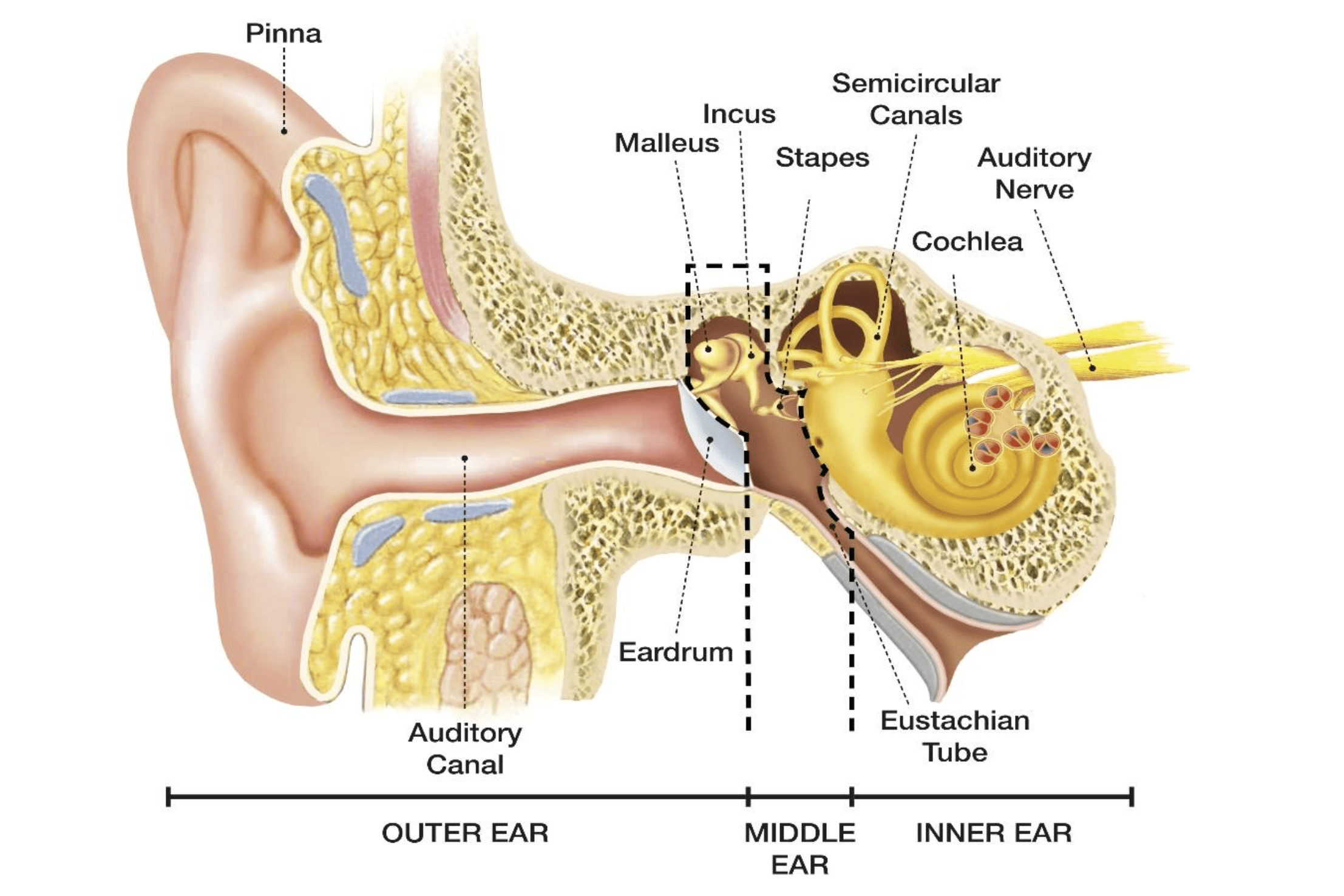
HEARING LOSS
This article will address acquired (not born-with) loss of hearing. First, let’s look at the anatomy of the ear; there are 3 sections—the external, the middle and the inner ear.
Hearing happens when sound enters the external canal, is mechanically transmitted (by vibration of the eardrum) to the bones in the middle ear and converted, in the COCHLEA (inner ear), into electrical impulses that are then transmitted by the auditory nerve to the brain. There are tiny, sensitive hairs and fluid in the cochlea that do this.
The ability to hear well naturally deteriorates as we age; this is called presbycusis and more than half the people over 75 have some form of hearing loss. The bones in the middle ear get stiff just like the bones everywhere else. Conductive hearing loss happens in the outer or middle ear with mechanical blockage, by say, waxy build-up in the canal or a foreign object stuck there. Sensorineural loss involves a problem with the inner ear. And there can be a combination of these two.
Loud noise (like a rock concert, jackhammer, sirens, firearms and motorcycles) can also permanently damage the hair cells in the cochlea. Ear infections, rare boney growths/tumors as well as a ruptured or perforated eardrum can decrease hearing. Infections outside the ear, like meningitis or others causing a high fever can injure the cochlea. And some medications like antibiotics, Viagra, diuretics and anti-malarial drugs can cause ringing or other hearing loss. Regular evaluation and hearing tests are a good way to optimize your auditory health.
SYMPTOMS/DIAGNOSIS/TREATMENT
We can probably recognize when others are having a problem with their hearing: they turn up the TV or radio loudly or ask others to repeat themselves, they lean in with their “good” ear. But if it’s us we may experience muffled sounds or words or be bothered by loud or background noise. There may be ringing in the ear(s), which is called tinnitus. Some people avoid being social and can even have cognitive decline due to hearing loss. If you experience a sudden loss of hearing in one ear, go to a doctor or urgent care
immediately! Getting care quickly can mean the difference between reversible or permanent deafness.
Your external ear canal and eardrum can be examined in the office, and a simple test performed with a tuning fork. There is an audiology test that can be performed to explicitly quantify the degree of hearing loss and in which decibels. In some cases, xray or MRI may be ordered to help in the diagnosis.
While there is often no “cure” for hearing loss, hearing aids can make a big difference in lifestyle and daily life. A hearing aid works by amplifying sound and directing it into the ear canal. A specialist called an audiologist can advise on the type that is best for you and fit you correctly so that they work properly. Cochlear implants are used in special cases and involve surgery.
BEHAVIORAL TIPS
Don’t be in denial—share with family and friends that you are having trouble so they can be supportive, by speaking clearly and slower if necessary, and not too loudly
Choose a quiet setting whenever possible
Turn off background noise while in conversation
Get the other person’s attention—don’t try to talk to someone in a different room
Use closed captioning on the TV
If you have hearing aids, wear ‘em! Rather than being embarrassed by having a device in your ear, you’ll be more comfortable and confident being able to take part in whatever is going on around you.
Ref: Mayoclinic.org
